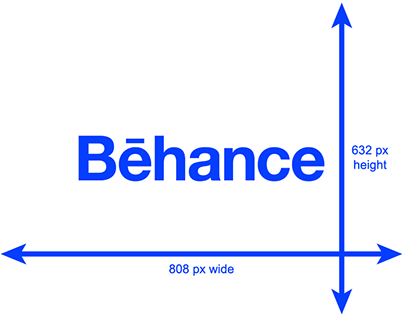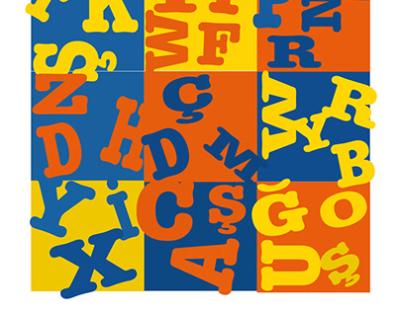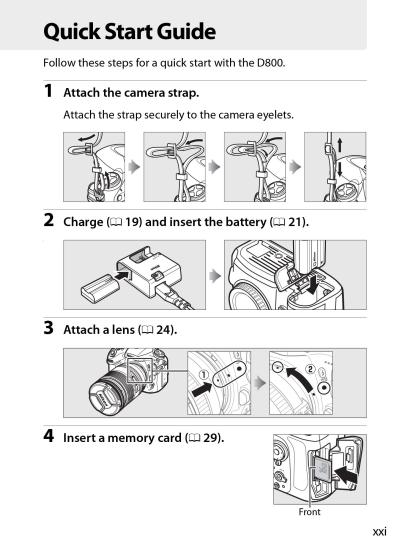Logo design is a crucial element of branding, especially on platforms like Behance, where creativity meets visibility. A well-designed logo not only reflects the identity and values of a brand but also captivates potential clients and audiences. This guide explores essential principles and practices for creating standout logos on Behance, ensuring your designs garner the attention they deserve.
Understanding the Importance of Logo Design on Behance

Behance is a leading platform for creative professionals to showcase their work and connect with clients. In such a competitive environment, a logo serves as a visual anchor for a brand’s identity. It is often the first impression a viewer has, making it imperative that it accurately represents what the brand stands for. A strong logo can communicate a brand’s essence, evoke emotions, and establish a sense of trust and recognition among its audience.
The importance of effective logo design on Behance can be attributed to several factors:
- Brand Recognition: A memorable logo helps users instantly identify the brand.
- Professionalism: A well-crafted logo signals a commitment to quality and professionalism.
- First Impressions: The logo is often the viewer’s first interaction with the brand, influencing their perception.
Key Principles of Effective Logo Design
Creating a captivating logo requires adherence to specific design principles that enhance its effectiveness. Here are key principles to consider:
- Simplicity: A simple design is easily recognizable and memorable.
- Versatility: The logo should work across various mediums and sizes.
- Relevance: It should reflect the brand’s values and industry.
- Timelessness: Aim for a design that won’t quickly become outdated.
- Uniqueness: Ensure your logo stands out from competitors.
By following these principles and understanding the importance of logo design, you can create designs that not only look good but also contribute significantly to a brand’s success on platforms like Behance.
The Role of Color and Typography in Logo Design
When it comes to logo design, color and typography are two of the most powerful tools in your arsenal. They can convey your brand’s personality, evoke emotions, and create a lasting impression. Let’s break down how each element plays a crucial role:
Color
Colors are not just visually appealing; they carry psychological meanings. Here’s a quick rundown of how different colors can affect perception:
- Red: Excitement, passion, aggression
- Blue: Trust, calm, professionalism
- Green: Growth, health, tranquility
- Yellow: Optimism, creativity, warmth
- Purple: Luxury, mystery, sophistication
Choosing a color palette that resonates with your audience can enhance brand recognition and emotional connection. It’s essential to consider how your colors will look against different backgrounds and in various formats, from digital to print.
Typography
Typography is equally important. The font you choose can tell your audience a lot about your brand. Here are a few things to keep in mind:
- Readability: Always prioritize clarity. If your logo is hard to read, it defeats the purpose.
- Brand Personality: Your font choice should reflect your brand’s voice. Is it playful? Sleek? Traditional?
- Consistency: Use your chosen typography across all branding materials to create a cohesive look.
Combining the right colors with the perfect typeface can elevate your logo from ordinary to extraordinary, ensuring that it effectively communicates your brand’s essence.
Incorporating Feedback and Iteration in Your Logo Design Process
The road to a stunning logo is often winding, filled with feedback and iteration. It’s a crucial part of the design process that shouldn’t be overlooked. Here’s how to make the most of it:
The Importance of Feedback
Getting feedback can provide you with fresh perspectives that you might not have considered. Here are some effective channels to gather input:
- Peer Reviews: Share your designs with fellow designers or colleagues to get constructive criticism.
- Client Input: Regularly check in with your client to make sure the design aligns with their vision.
- Focus Groups: Consider putting your designs in front of potential customers to gauge their reactions.
Embracing Iteration
Design is an iterative process, meaning you’ll often go through several rounds of revisions. Here’s how to effectively incorporate that:
- Set Clear Goals: Determine what you want to achieve with each iteration—be it refining color, adjusting typography, or simplifying shapes.
- Document Changes: Keep track of feedback and how you’ve adjusted your designs based on it. This helps ensure no good idea gets lost.
- Stay Open-Minded: Sometimes the best ideas come from unexpected sources. Be willing to pivot your design based on feedback.
By actively seeking feedback and being willing to iterate, you can refine your logo design until it truly captures the essence of your brand, leading to a final product that you’ll be proud of.
Showcasing Your Logo Design on Behance
When it comes to sharing your logo design on Behance, the presentation is just as important as the design itself. Here are some best practices to ensure your project stands out:
- High-Quality Visuals: Use high-resolution images to showcase your logo. Blur or pixelation can turn off potential clients and other designers. Consider using different formats such as PNG, JPEG, or even vector formats for versatility.
- Mockups: Present your logo in real-world contexts. Use mockups to show how it looks on various materials like business cards, t-shirts, or even storefronts. This helps viewers visualize the logo in action.
- Process Images: Include sketches and drafts to give a behind-the-scenes look at your design process. This not only shows your skills but also engages viewers by telling the story of how the logo evolved.
- Typography and Color Palettes: Create a section that explains your choice of typography and color schemes. Discuss how these elements align with the brand’s identity and values.
- Consistent Layout: Keep your project layout tidy and organized. Use headings, subheadings, and spacing effectively to guide viewers through your work without overwhelming them.
Lastly, don’t forget to write a compelling project description. Tell the story behind the logo, the challenges faced, and how you overcame them. Engaging narratives can help viewers connect emotionally with your design.
Case Studies of Successful Logo Designs on Behance
Looking at successful logo designs on Behance can provide you with valuable insights and inspiration. Here are a few standout cases that showcase different approaches and styles:
- Project: “Minimalist Magic” by Artist X
This project emphasizes the power of simplicity. The artist cleverly uses negative space to create a memorable logo that sticks with the viewer. The colors are limited, making the design pop against various backgrounds.
- Project: “Bold Branding” by Designer Y
Here, the use of vibrant colors and dynamic shapes showcases how variety can attract attention. This case highlights the importance of aligning logo design with target audience demographics—perfect for brands looking for youthful energy.
- Project: “Heritage Inspired” by Artist Z
This project dives deep into storytelling. The logo draws from historical elements, creating a timeless design that resonates with the target audience. The artist provides insights into their research process, explaining how each element was selected.
By examining these case studies, you can gather inspiration for your own logo endeavors while also understanding what makes a project appealing in the Behance community. Whether it’s through storytelling, innovative design techniques, or captivating visuals, these cases demonstrate the breadth of creativity you can explore in your logo design sessions.
Tools and Resources for Designing Logos on Behance
When diving into logo design on Behance, having the right tools at your disposal can make a world of difference. Fortunately, there’s a wealth of resources available to help you create stunning logos that stand out on the platform. Here’s a breakdown of some essential tools that can elevate your design process:
- Adobe Illustrator: The industry standard for vector graphic design, Illustrator offers powerful tools for creating scalable logos. Its precise drawing capabilities and extensive typography options are invaluable.
- Canva: Perfect for beginners, Canva provides user-friendly templates and drag-and-drop features that make logo creation accessible. While it’s not as robust as Illustrator, it’s an excellent starting point.
- Affinity Designer: A cost-effective alternative to Adobe products, Affinity Designer is great for both vector and raster graphics, making it a versatile addition to your toolbox.
- Procreate: If you prefer drawing logos by hand, Procreate is fantastic for sketching ideas digitally. Its brush options and layering system make it a favorite among illustrators.
- Coolors.co: Color plays a critical role in logos. Use Coolors to generate color palettes that evoke the right emotions and align with your brand identity.
In addition to tools, don’t forget to explore:
- Behance‘s Creative Community: Engage with other designers for feedback and inspiration. The project comments and messages are great for networking.
- Design Blogs and Tutorials: Sites like Smashing Magazine and Creative bloq are packed with tips and trends that can help refine your logos.
- Mockup and Presentation Tools: Use tools like Placeit or Smartmockups to create stunning presentations of your logo in real-world scenarios.
These tools and resources will give you a solid foundation to create captivating logos and showcase your work effectively on Behance!
Conclusion and Next Steps for Aspiring Logo Designers
As we wrap up our guide to Behance logo design best practices, it’s important to remember that the journey of logo design is both exhilarating and challenging. With the right mindset and resources, you can turn your aspirations into reality. Here are some key takeaways and next steps you can take:
- Keep Learning: The design world is constantly evolving. Stay updated with the latest trends and techniques by following design communities, taking online courses, and practicing regularly.
- Build Your Portfolio: Begin showcasing your work on Behance. Start with personal projects or redesign existing logos to demonstrate your skills and unique style.
- Seek Feedback: Don’t hesitate to ask peers for critiques of your designs. Constructive feedback can help you grow and improve your work.
- Network Actively: Engage with other designers on Behance and beyond. Join design forums, attend workshops, and collaborate with others to expand your reach.
- Participate in Challenges: Many platforms, including Behance, host design challenges. These can help you push your creative boundaries and gain visibility.
Finally, be patient with yourself. Mastery in logo design takes time and practice. Celebrate your progress, keep pushing your boundaries, and soon you’ll find your unique voice in the world of design. Ready to get started? Dive into your next project, and let your creativity shine!


